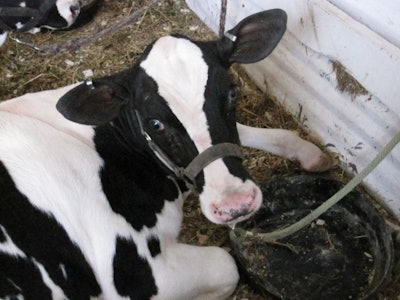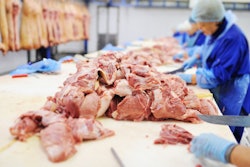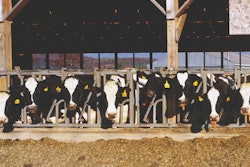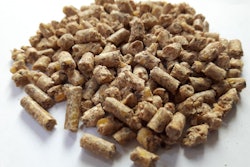
The importance of starter feed intake remains undervalued, whereas that of milk or milk replacer is overemphasized at the expense of efficiency and long-term performance.
Young dairy heifers are reared intensively to become efficient, high-yielding replacement cows. For that, research has demonstrated that pre-weaning performance is crucial to their lifetime performance. For instance, the industry now accepts that for each extra 100 grams/day growth before weaning, first-parity cows yield 150 kg of extra milk. The question, then, becomes how to increase pre-weaning growth.
Increasing pre-weaning growth
The most straightforward answer to this question is to increase ingestion of nutrients. And, what better vehicle for this purpose than the milk or milk replacer offered to pre-weaned calves?
A naturally suckling calf will consume more than 10 liters of milk per day, whereas a calf reared away from its dam is being provided about half this amount. Increasing milk or milk replacer (most often) intake seems a reasonable way to increase nutrient ingestion. Such an approach appears correct, and in trials where calves were offered increasing amounts of milk replacer from 4 to 6 to 8 and even 12 liters of milk replacer per day, growth increased linearly. After all, milk replacer is consumed readily by all calves; even more so when it is fresh pasteurized whole milk. But, is this the most efficient or even appropriate way to produce heavier heifers at weaning?
Industry observations and research agree that as long as calves become accustomed to waiting for their next milk replacer meal, they will shun dry feed. Starter feed in dry form is provided from the second week of life in the form of a corn-soy meal or pellet, or a more elaborate textured feed (muesli).
Intake of milk replacer and starter feed follow opposite trends: the higher the consumption of milk replacer, the lower that of starter feed. The opposite is also true: When calves are not drinking enough milk replacer to satisfy their needs, then they resort to consuming more starter feed. Eating more of the starter feed is the way forward.
Why more starter feed is desirable
There are two reasons why eating more starter feed is desirable. Obviously, starter feeds are cheaper per unit of nutrients than most milk replacers, even though they may not be as cheap when it comes to measuring growth efficiency in the early stages. They are also easier to manage compared to the elaborate process of preparing, transporting and feeding a liquid milk replacer.
Then, and most importantly for this discussion, dry starter feed promotes the development of the forestomach (rumen) that is responsible for digesting non-milk components. Liquid milk or a milk replacer will bypass the forestomach to reach the actual stomach directly, where normal digestion follows. Instead, a dry starter feed will enter first the rumen where it will be fermented by local microbiota. Such process boosts early rumen development, gives overall higher performance and increased efficiency in terms of nutrient utilization and economy, especially when the immediate post-weaning period is included in our calculations.
Research has shown that calves do not require just more milk or milk replacer to thrive. In fact, even the newer, fortified milk replacers with more protein (up to 28%) are not offering significant long-term benefits. Instead, providing a moderate amount of a standard (20% each in fat and protein) milk replacer (or fresh milk) is deemed enough, even if calves are fed once per day (twice per day is the industry norm).
More attention should be paid during the first month of life as rumen microorganisms are not fully established there and, as such, calves need to be adequately nourished with milk components. But, in the second month, the emphasis appears to be on ensuring milk or milk replacer intake is minimized until it is cut off entirely at weaning, whereas that of starter feed is maximized.
Why most starter feeds fail
If this is the case, why do most producers continue to push for more nutrient intake through high-powered milk replacer products? The answer is because we are still not able to offer a starter feed that significantly promotes consumption enough to compensate for reduced nutrient uptake from milk or milk replacer. Our starter feeds are still not up there, and there are several reasons why starter feeds fail. Here, is a brief list of practical aspects.
- A corn-soybean meal type of starter feed is the one to be consumed at the least amount as it offers the least incentive to young calves. Not only the taste effect is rather uninteresting, but the meal form is unattractive to calves. Being the least expensive, it is the most widely used, and thus, intake is always below expectations.
- Pelleted feeds, on the other hand, promote higher feed intake, but then again, if the feed composition is too dull and without proper fortification, then calves have little incentive other than mere hunger to consume it. Pellets are also slightly more expensive than a meal starter feed, and most often than not, they need to be purchased instead of being prepared on-site at the farm.
- Texturized feeds offer the most excellent chance for a higher feed intake as it can include ingredients of higher palatability and digestibility. It is more expensive than pellets, but a high-quality product often has a sure return on investment.
The need to further develop starter feeds
In the case of starter feeds, research is not as developed as it should be, at least compared with that on milk replacers or starter feeds of other monogastric animals.
First, a single feed is offered throughout the usual eight-week pre-weaning period. Instead, a sophisticated starter feed could be provided in the first month (a muesli, perhaps), whereas a less expensive but equally dense in nutrient composition starter feed could be more beneficial in the second month.
Also, the use of molasses remains controversial from a scientific point of view, but practical evidence shows calves cannot resist the taste. On the other hand, adding too much molasses causes feed handling problems, including the proliferation of flies that make feed unattractive and contaminate water and milk buckets, and everything else in the area. Here is a great area of research awaiting.
Finally, when it comes to additives, there is still a considerable gap in knowledge compared with other species. Here, in the case of calves, we need to remind ourselves that the dry feed is not destined to nourish the animal directly. Instead, the target is the resident microbiota in the rumen, which in turn will produce higher value nutrients that will eventually nourish the animal.
Besides, with calves, we need to use such additives that promote the early establishment of a healthy microbiota. Doing so enables the animal to very efficiently convert low-quality feeds, such as roughage post-weaning, into continuing growth. It also helps for a smooth transition during the immediate post-weaning phase, without the usual lag.
Although research and commercial emphasis is on milk replacers, evidence continues to signal a need for developing better starter feeds as these appear more promising for a less expensive and more efficient growth pattern. Of course, none of the above would be relevant if calves were weaned at six months, but with early weaning, which is the norm today, there is just not enough time to allow for a normal transition to dry feed.















